|
Over the past
few years it’s become common knowledge among Ozark outdoorsmen that Missouri has a growing problem. Over the last
decade feral hog populations have grown at an exponential rate. Today it is estimated that that Missouri’s feral
hog population is established in over 20 counties and numbers somewhere between 5,000 and 10,000 individuals. While
feral hogs are a fascinating and very successful species they have no place in the Ozark ecosystem. Not only do feral
hogs have a direct and devastating impact on Missouri’s native plant and animal communities, they also can spread disease
to people, pets, and domestic livestock.
Feral hogs have been present in Missouri ever since
the days of the Civil War. Rather than keeping them penned up, where they would have to be looked after and fed, early
Ozark settlers would allow their hogs to forage for acorns in the surrounding hills. Also, during the war, many settlers
were forced to abandon their farms and, in turn, had to turn their livestock loose to fend for themselves. Up until
this past decade, these small bands of hogs were of little consequence and their numbers remained small enough to have little
impact on the native landscape. More recently, though, due to the popularity of feral hogs as a sporting animal, Missouri’s
hog population has gotten a major boost. Escapees from private hunting enclosures, along with animals purposely released
by ill-informed sportsmen, has allowed our state’s feral hog population to explode. The seriousness of this population
explosion has prompted the Missouri Department of Conservation to declare all out war on our feral hogs.
Hearing
more and more about this growing problem in my neck of the Ozarks, along with a mounting case of cabin fever last winter,
I was impelled to get out and see if I could do my part in getting this population boom under control.
I already
had a location picked out. Earlier in the season, on a backpacking trip to a nearby wilderness area, I had come across
some glades that were completely torn apart by rooting hogs. I figured this would be as good a place to start as any.
In the following weeks, I made a series of hunting trips to this area, learning more and more with each trip about the habits
of my quarry. After many cold hours in the winter woods and many miles of trudging through deep snow, I finally got
my chance.
*Other than
the very last one, the following pictures are all from my cell phone and their quality reflects that fact.*
These first
three photos is of the rooting left behind by foraging pigs.
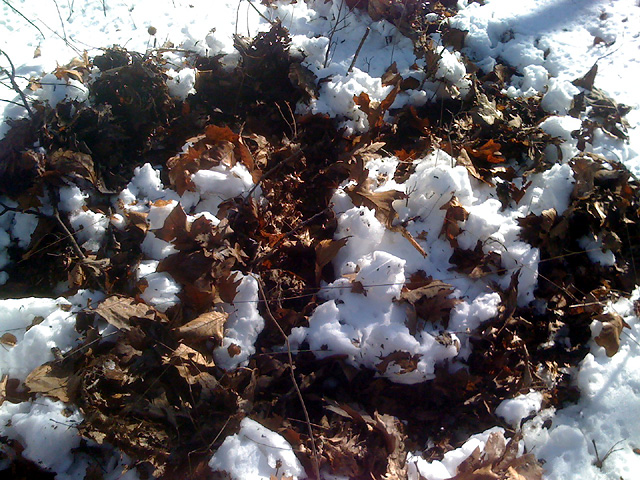
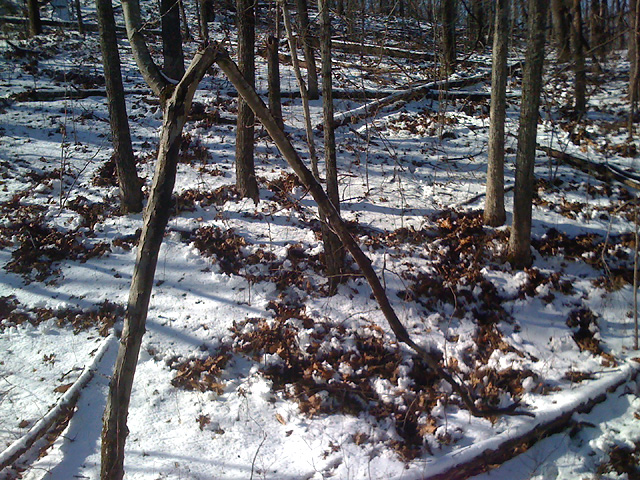

A couple of tracks
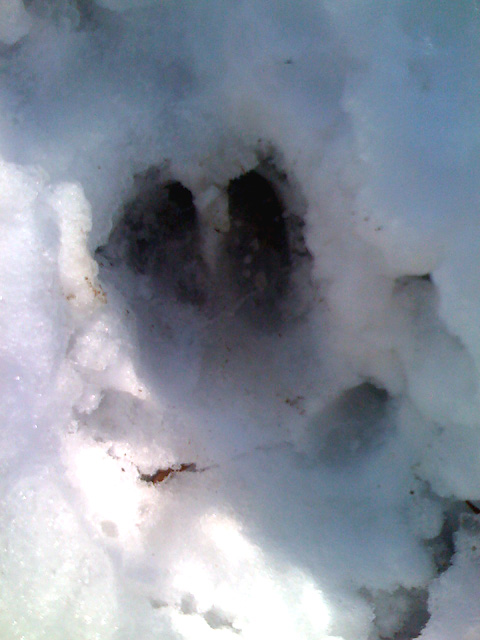
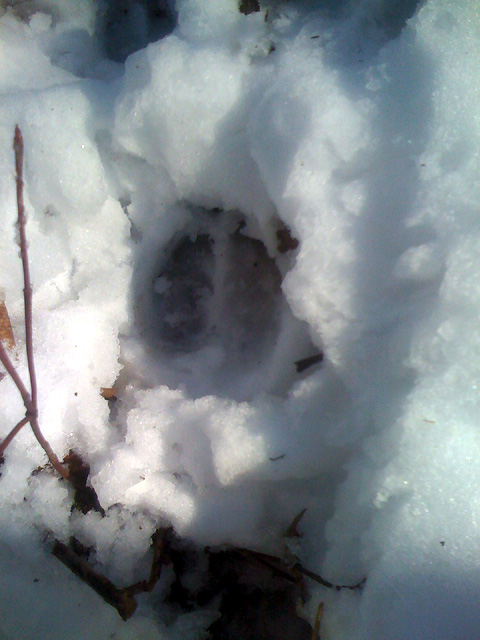
Scat
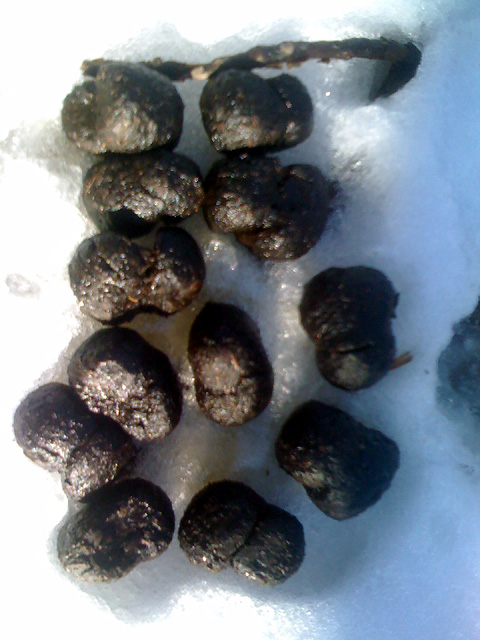
The view from the
top of Bell Mountain
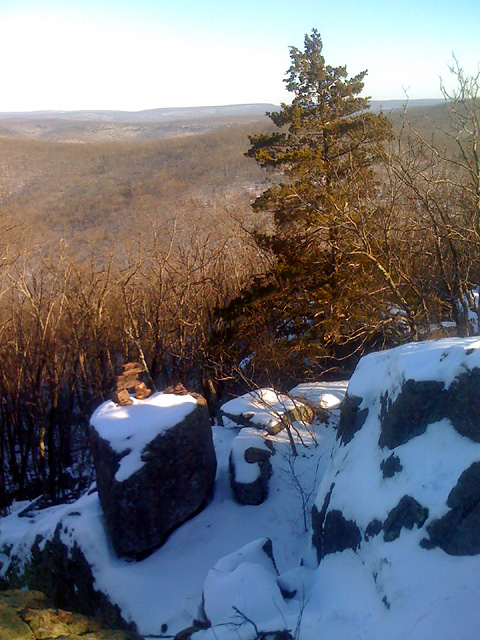
Leaving the wilderness area one evening
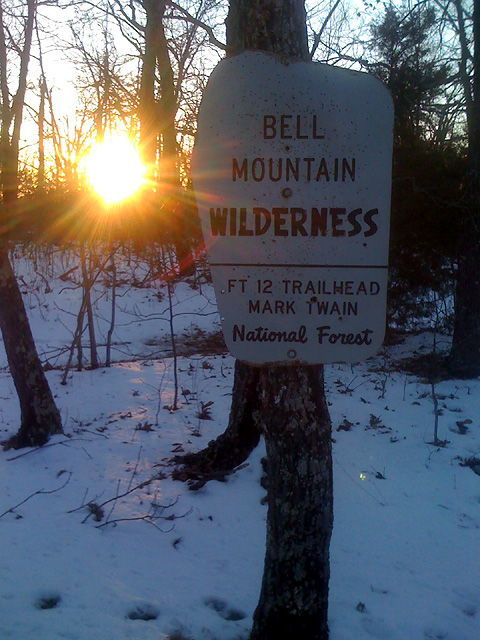
Entering the wilderness area one morning
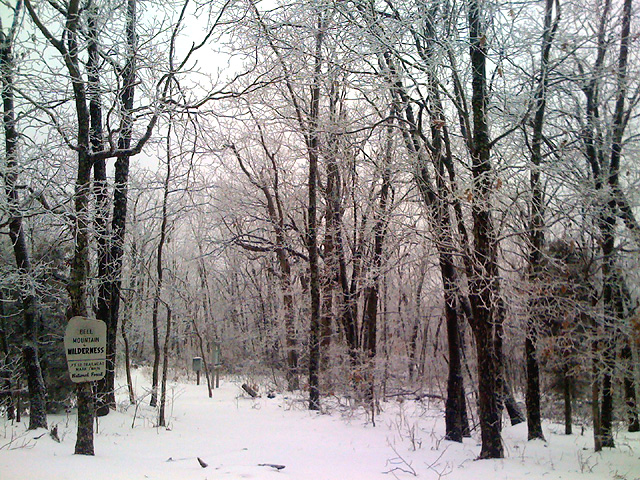
A cold camp
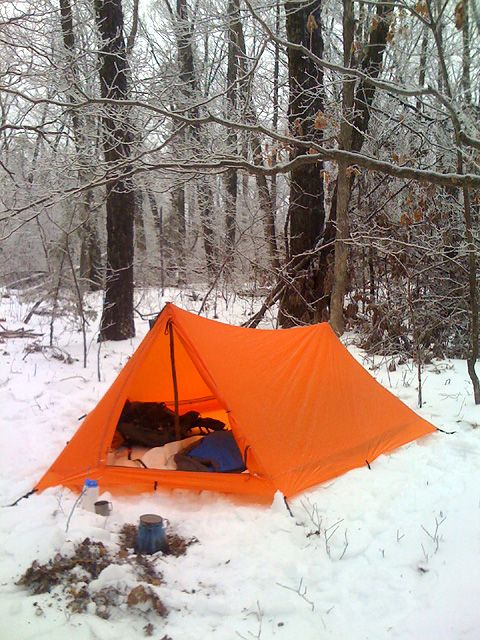
A self portrait
of myself freezing on a bed of ice
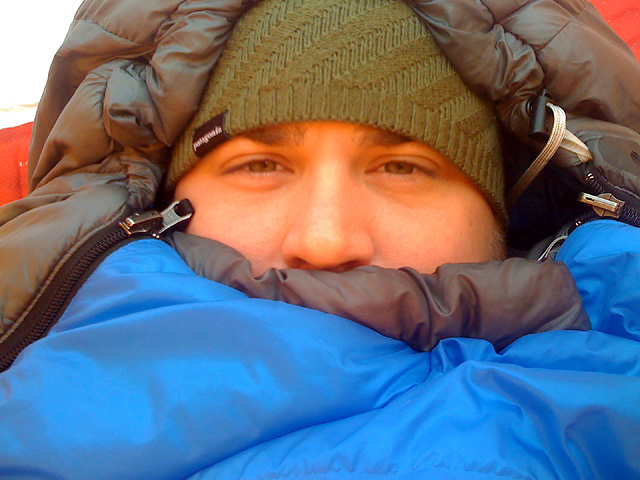
An icy view from atop Bell Mountain
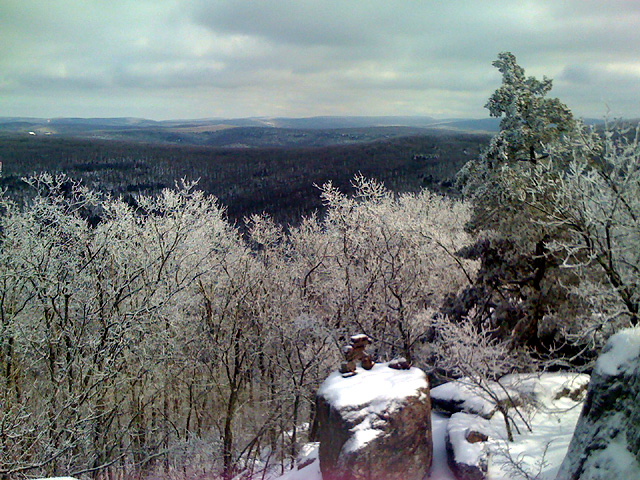
The next three photos are of the top of Bell Mountain on a day that it was completely socked in by an icy cloud.
It was quite beautiful.
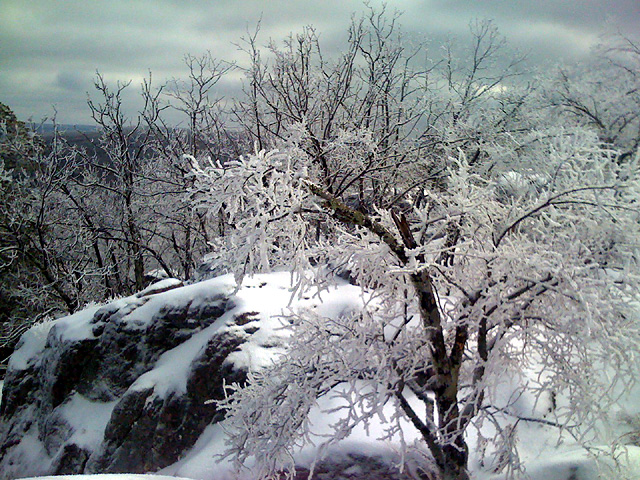
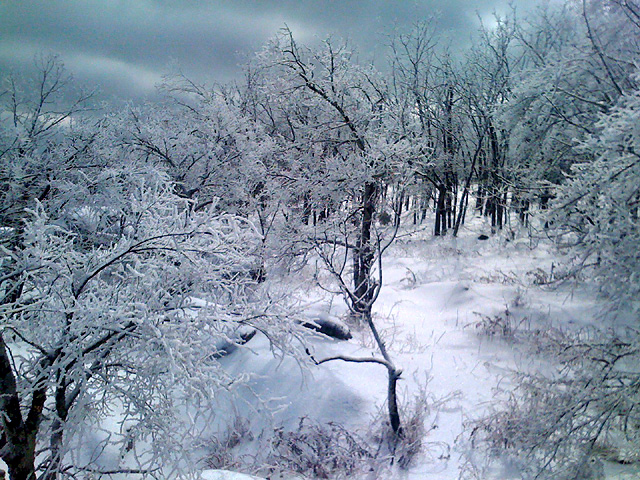
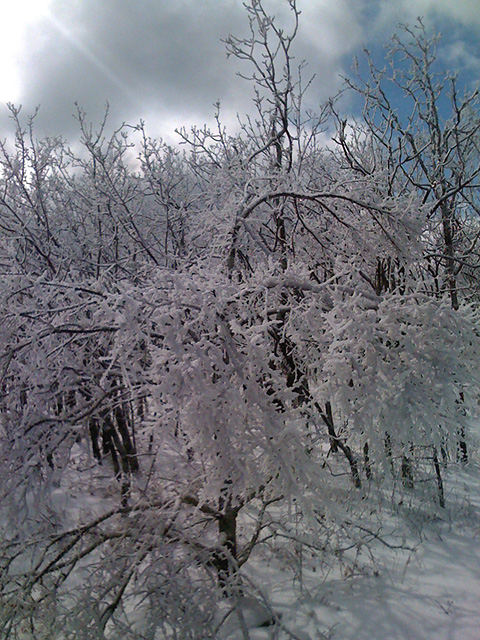
I was actually
tracking a hog when it led me to this deer kill that it appeared to scavenge on. By the size of the tracks present,
I assume the kill was made by coyotes. Note the bloody paw print in the first photo.
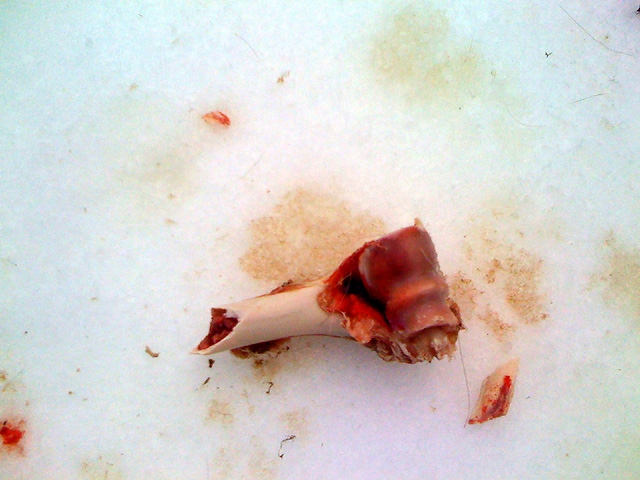
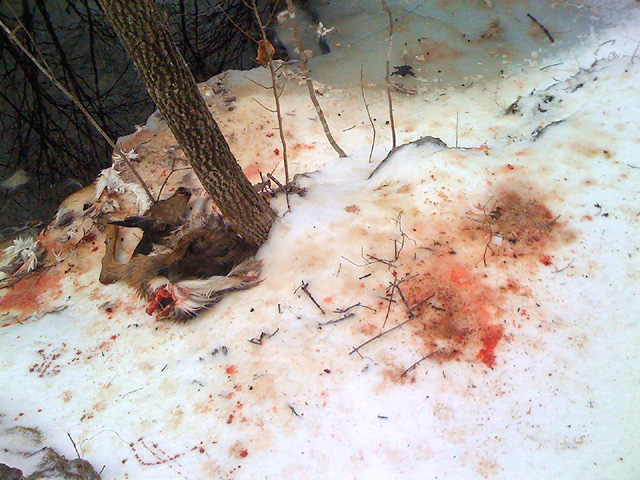
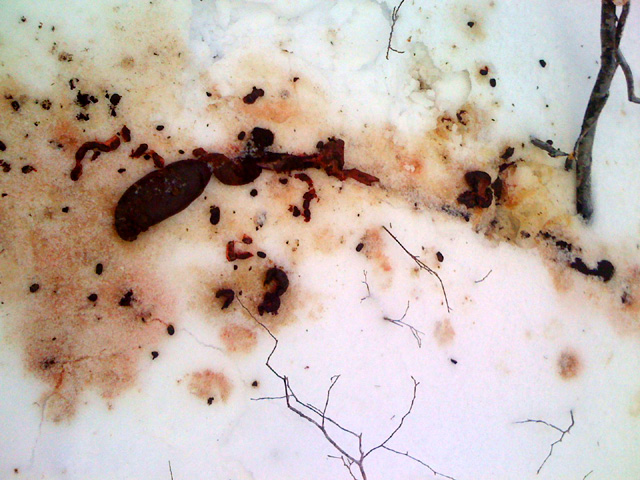
I had hiked
all day in a two-day old snow looking for fresh tracks. I found a lot of sign from the previous day but nothing new.
Finally, as evening approached and a steady icy rain started coming down, I started making my way in the direction of the
car, which was a good six or so miles away. Along the way, I came across a large group of very fresh tracks heading
right into the wind. Tired, but not wanting to pass up the opportunity, I slowly picked my way along the tracks, all
the while, keeping note of the wind direction, and a close eye on the surrounding woods. After about an hour of tracking,
I was gradually making my way across a series of glades when I spotted a little movement about one hundred yards or so into
the woods, it only took moments to make out the shape of the, aptly named, razor-back of a hog. There was a lot of cover,
making him hard to see, much less get a shot at. Thinking about my next move, I noticed a large bolder about ten yards
and slightly to the left, of my position that looked like a good place to get a shot from. I backed off and then slowly
crept up behind the bolder. Clicking off the safety, I raised my rifle above the bolder only to be disappointed.
The hog had disappeared. I was distraught, cold, wet, and empty handed once again. I figured he must have seen
me, caught my scent, something. I was ready to pack it up and head home but I figured I'd go down to where I saw him
and try to make out what exactly happened. I couldn't find any sign that the hog spooked, the tracks just seemed to
move off, continuing to root for acorns. I went ahead followed along, carefully. Coming to another glade, again
I spotted movement about a hundred yards across the glade and into the woods. By lying down and sliding across the ice
covered glade on my belly I was out of sight of the hogs and able to get into a good shooting position. Lying on the
edge of the glade gave me a good view of two large hogs, both of which were using their shovel like heads to root and throw
large chunks of snow and ice into the air. At this point, my heart was pounding and my limbs were shaking. I had
to remind myself to take my time, breathe deep, and concentrate on making a good shot. One of the hogs turned broadside
offering me a clean shot. Settling the scopes crosshairs just behind the hog’s shoulder, I squeezed the trigger.
Recovering from the recoil of the rifle, I looked through the scope again. I had missed. Both hogs were standing
at full attention, seemingly unharmed. I quickly released the rifle bolt allowing the spent cartridge to expel and immediately
slammed a new one into the chamber. Again, taking aim, I fired. This time all hell broke loose. To my surprise,
there was a large group of hogs foraging just out of sight in a hollow below the two I could see. At the second report
of the rifle they all exploded into view, running directly in my direction. Immediately, my head was spinning with all
the exaggerated tales I had heard of these animals tearing hunters limb from limb. My first thought was to stay on the
ground and hold still because the hogs had obviously not seen me yet but it was quickly apparent that this strategy would
not work because the whole group was cutting a straight line for me. At this realization, I jacked another shell into
the chamber, stood up, and waved my arms in the air. The hogs saw me and split off to go around me, a couple on my right,
and the rest on my left. Right away I noticed one of the hogs on my right was favoring a leg. Knowing this must
be the one I had shot, and not wanting to be responsible for it escaping only to parish slowly later on, I aimed my rifle,
fired, and an instant later it lay still on the ground. To my left there was still a steady stream of hogs moving past.
Again I raised my rifle and fired, dropping a second hog only ten yards from my position. From the very first shot,
the events that took place seemed like an eternity but, in reality, it was all over in an instant. Gathering my thoughts
and coming to the realization that all my effort over the winter had just paid off, I made my way down the hill to admire
the larger of the two hogs. Needless to say, I was elated, that is, until I tried to move the animal. This brought
me to face the reality of just how difficult it was going to be getting them out of the woods.
I climbed to a
higher position where I could get a signal on my cell phone, and then I called everyone I thought I could talk into helping
with the task ahead. I could only reach my friend Brian Scheidt. Brian agreed to help out, and was to gather up
flashlights and rope before making the hour drive to the wilderness area. In the meantime, I would go ahead and field
dress the hogs before hiking out to a trailhead to meet Brian. By the time Brian reached the trail head the night had
fallen and so had the temperature. We made our way through the cold dark woods until we found the hogs.
We were both worried if the chore ahead was even going to be possible, and in the end, it turned out that it just barely was.
We worked hard long into the night dragging those two hogs out of the wilderness but, despite the difficultness of that chore,
the overall experience of the hunt, along with the knowledge that I was doing my part to preserve and protect Missouri’s
woodlands, made it all worth it.
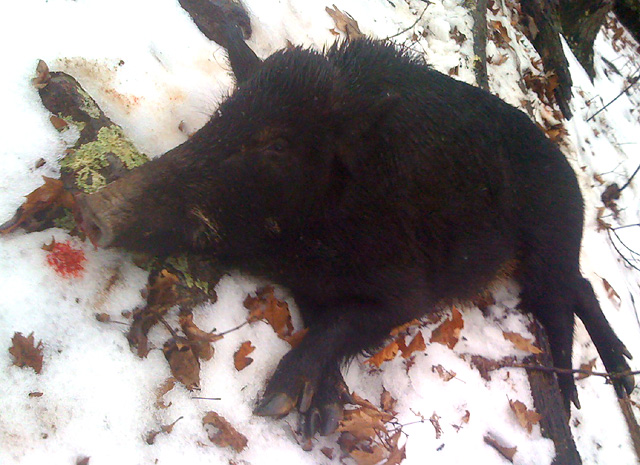


This last photo,
of me preparing to enjoy the fruits of my labor for Easter dinner, is by my aunt Margaret.
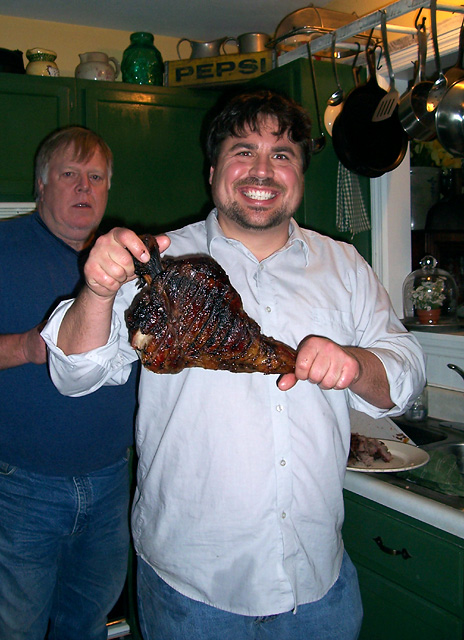
|

